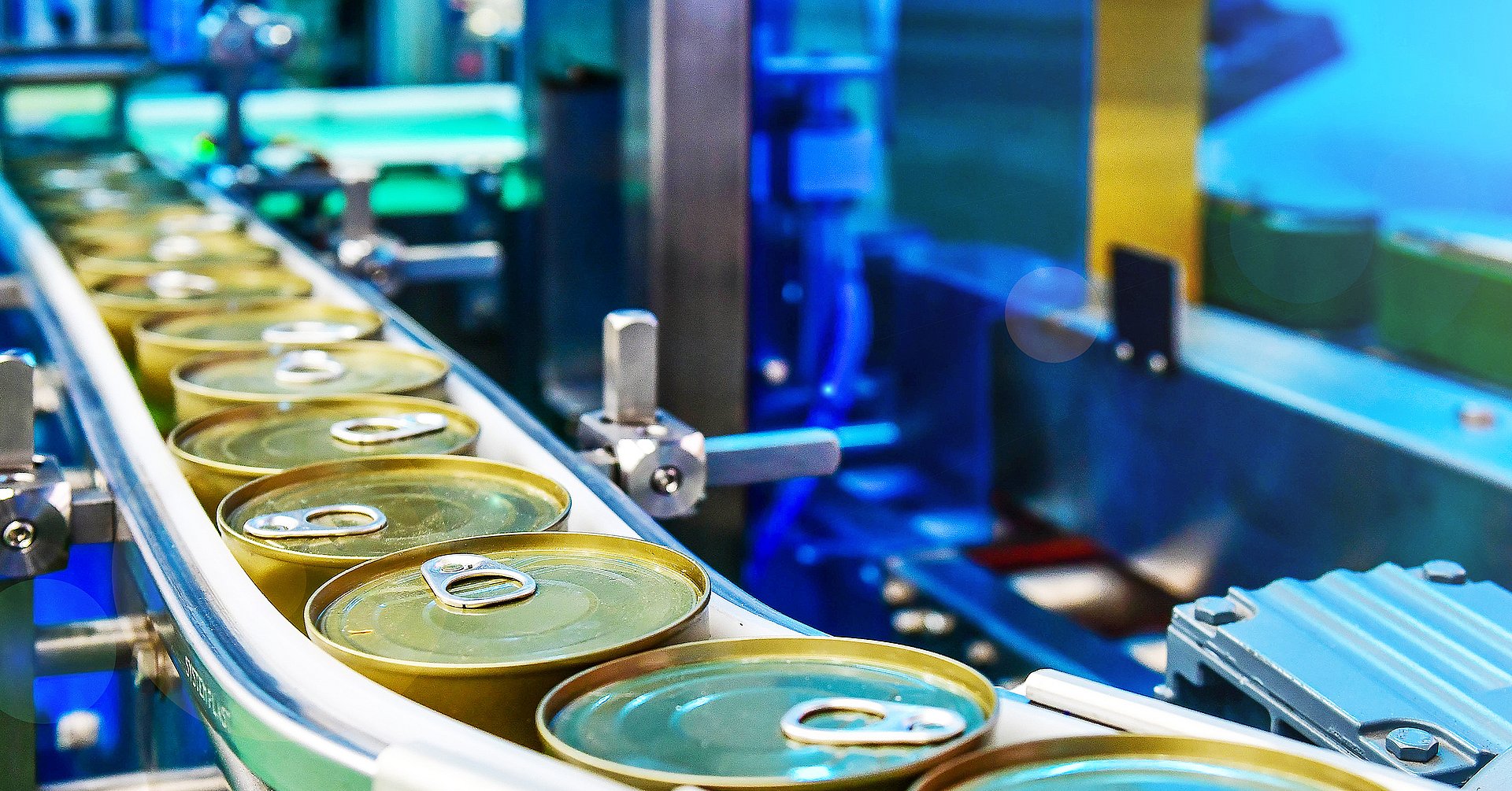
Konservendosen ermöglichen lange Haltbarkeit und sind gut recyclebar.
© I Viewfinder - stock.adobe.comPackaging materials
So-called food contact materials are all items and materials with which the raw materials and finished food come in contact during manufacturing, e.g., equipment and production plant parts in the processing, and packaging materials for the finished products.
Food packaging has important functions
Food packaging can consist of different materials such as plastic, glass, paper, cardboard, aluminum or tinplate. They have a protective, storage and transport function. The packaging protects our food from environmental influences (e.g. light, moisture), from contamination and damage. In addition, packaging is a carrier of important information. In this way, packaging ensures the high quality, safety and diversity of the food.
Production and safety of food packaging
Food contact materials must generally behave inertly, i.e., no substances may pass over from them to the food if this would lead to an impairment of food safety. In addition, these materials must be produced in accordance with what is known as “good manufacturing practice”, i.e., that their production must take place within the framework of documented quality assurance systems according to defined specifications. The general legal framework is set out in European Regulation (EU) No. 1935/2004. For certain material groups, such as plastics, there are also extensive individual regulations on their manufacturing processes and permitted material composition.
Mineral Oil Hydrocarbons
- Toolbox for Preventing the Transfer of Undesired Mineral Oil Hydrocarbons into Food (PDF, 733 KB)
- Guideline for the assessment of MOSH/MOAH migration from packaging into food with the aim of minimization (PDF, 4 MB)
- FoodDrinkEurope/BLL 2018: Toolbox for preventing the transfer of undesired Mineral Oil Hydrocarbons into Food (PDF, 2 MB)
- Benchmark levels for mineral oil hydrocarbons (MOH) in foods (PDF, 176 KB) ALB/Food Federation Germany (January 2024): Benchmark levels for mineral oil hydrocarbons (MOH) in foods
- Explanatory notes on the EFSA opinion and the Joint Statement of the EU Member States in the SCoPAFF (PDF, 365 KB)